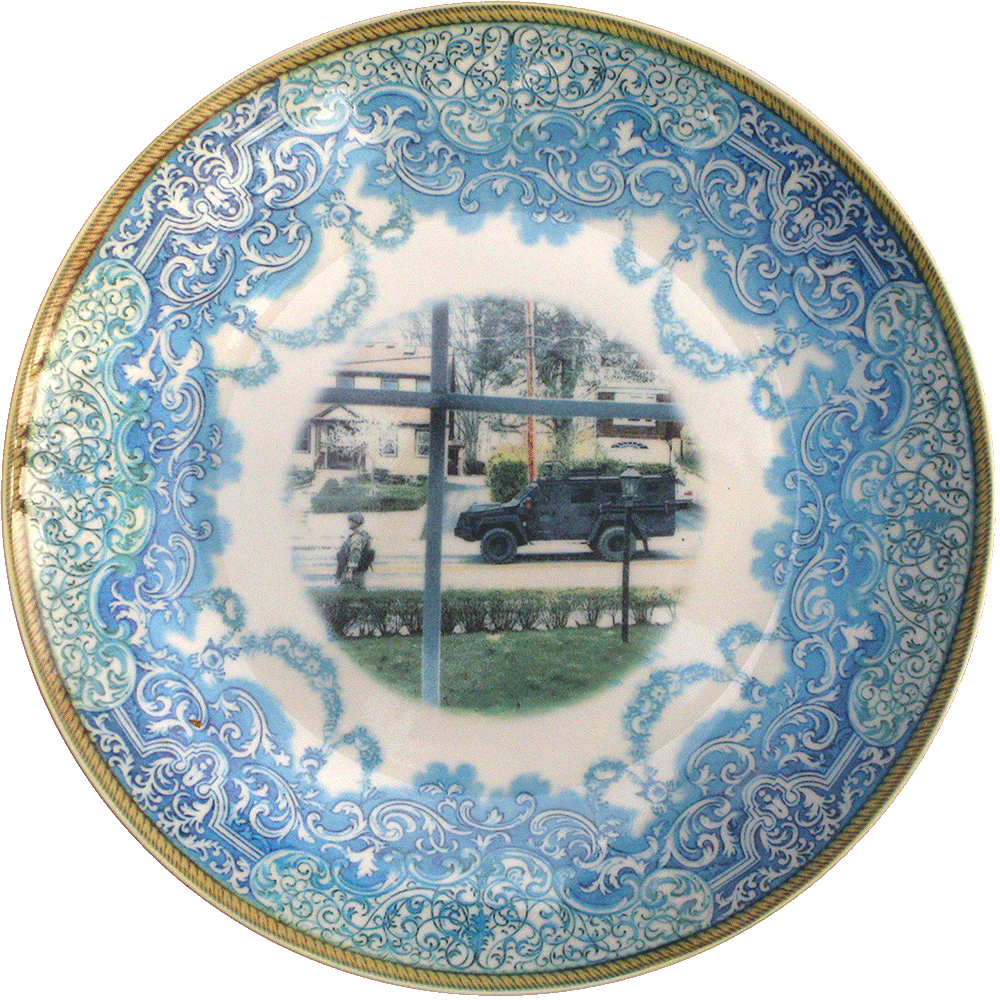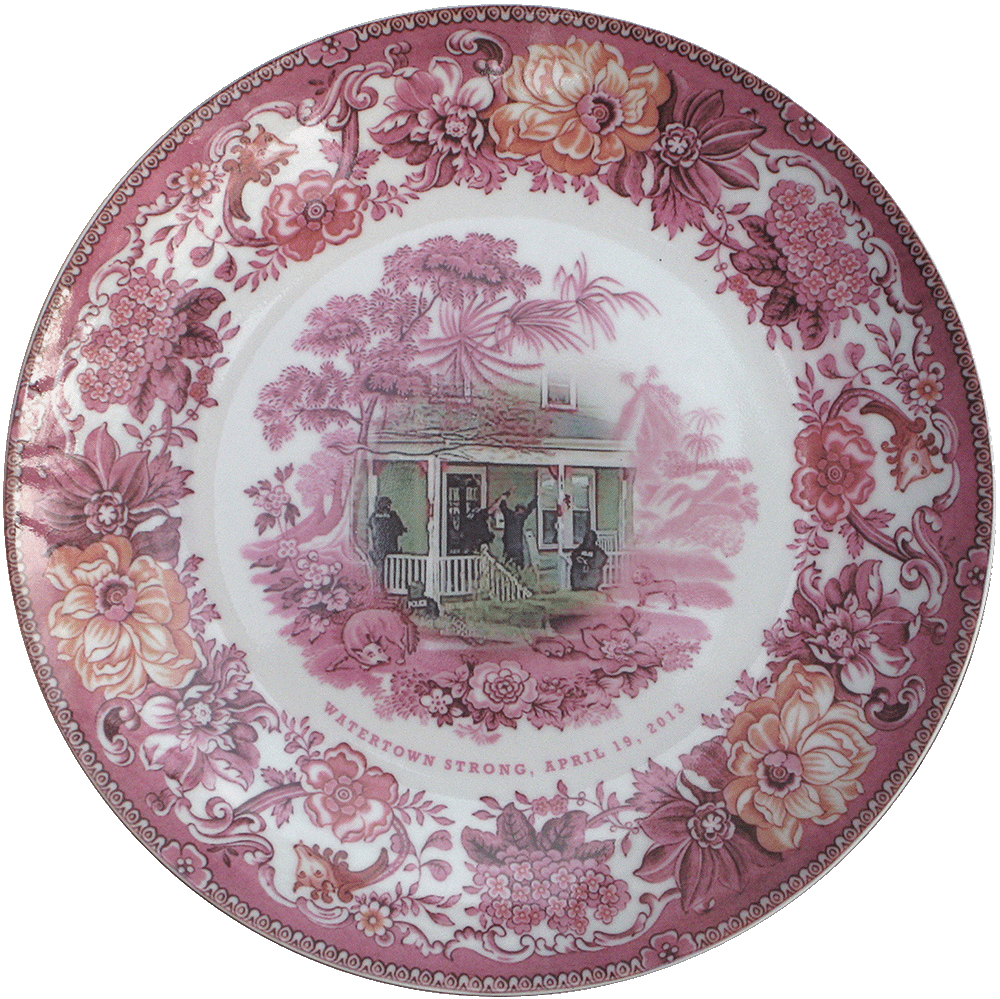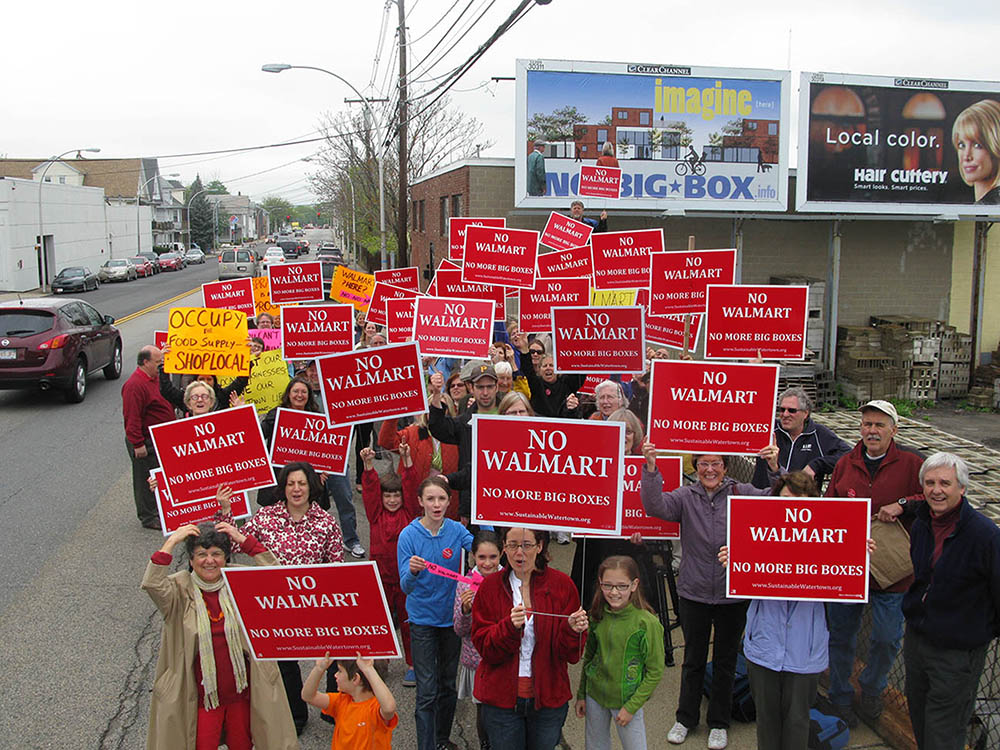“It is very fluid. We go to the beach, and while our daughter is running off into the ocean, we might be talking about the work. It is integrated into our lives. There is no separation between work and leisure.”—Chantal Zakari
Mike Mandel + Chantal Zakari: Graphic Arts + Photography Faculty, SMFA / Boston MA
thecorner.net
“it is very fluid. we go to the beach, and while our daughter is running off into the ocean, we might be talking about the work. it is integrated into our lives. there is no separation between work and leisure.”—chantal zakari
What is your collaborative process?
Chantal: Our collaborative work is about discussion and analysis. We collaborate on every level of the project. The production is a shared load. It depends a little bit on skills, but it also depends on who has time to do each piece.
Mike: Chantal comes out of a design background, and I am a photographer. We have those different histories and different perspectives to bring to a project. But we consider ourselves partners in every aspect of the project. Our current work, Shelter in Plates, is a series of commemorative plates designed as a response to the military lockdown in Watertown, where we live, during the manhunt for Dzhokhar Tsarnaev; we were both involved in the concept and design of the work.
Chantal: There were SWAT teams everywhere: in our streets, looking in our backyards, and peeking under porches. In our part of the neighborhood, they only looked into our backyards. A block south from us, in a five block area, people were walked out of their homes with their hands up. That area has a lot more Middle Eastern immigrant families. They were entering apartments with guns, walking people out of their homes.
Shelter In Plates
courtesy of mandel + zakari
Mike: It was basically martial law without martial law being declared. We had to shelter in place, as was requested by the governor and the mayor, just staying in the house while all of the police and SWAT teams came in and investigated. We collected all of this imagery, video stills, thousands of bits of information about this event from the Internet. For the past few months, we had already been thinking that we were going to do something about Watertown’s military legacy, because Watertown has one of the first national arsenals. There is a whole military history to the town, and we wanted to speak to that in our work. But without even having to do any research, the imagery came to our house on April 19, 2013.
Chantal: We do a lot of socially engaged work. We like being involved in social issues and activating the public and creating a dialogue. All of this imagery that we had collected about the manhunt in our neighborhood was of houses that we knew and recognized. The idea that we came up with was to design commemorative plates. We found a company in Colorado to fabricate the series of six plates. We designed them with images that we found online and then coupled it with Victorian floral embellishments to mimic the genre of commemorative plates. We were able to produce them cheaply enough so that people who may not typically collect art, were able to buy them. Now our plates are hanging in dining rooms in Watertown and throughout the country. It is not really activist art per se, but it engages the audience in a discussion and a dialogue.
Mike: There was another community effect when we were recognized by the local media. We were interviewed on radio and TV because the Watertown Chief of Police tried to stop the project. So when the police got involved, we just folded that into the piece. We got our attorney to respond to him, and the attorney’s letter became part of the presentation—all six plates hanging in a gallery with a letter from our attorney to the police identifying the interference as an act of intimidation parallel to what they were doing on April 19 by walking people out of their homes.
Can you elaborate on the role of collaboration in activist work?
Mike: One activist artwork that we collaborated on was The Election Campaign, when I ran as a write-in candidate for Town Council to engage our community about the issues surrounding a Walmart store that was trying to get approval to come into Watertown. At the last moment before the town elections, we chose to have me run to challenge this issue, and Chantal was the campaign manager. We got hundreds of people to help on the campaign. We made flyers and websites; I gave speeches to community groups. I was literally only a candidate for the two weeks before the election.
Mayoral Election Campaign
courtesy of mandel + zakari
Chantal: The aim was not to win the election, but rather to activate the community about this issue. Even after the election, we continued the work by raising money for a billboard we designed, which we installed right where the proposed Walmart was to be built.
Mike: Walmart withdrew their application after our billboard was up for two months. And, I almost won the election. We lost by 89 votes. But almost winning is better than winning, because we created all of this community involvement.
The State of Ata
courtesy of mandel + zakari
Chantal: Previously, we worked on The State of Ata for 14 years, which resulted in a book and a series of exhibitions. Beginning in 1997, we went to Turkey yearly to photograph in the streets. The focus of the project was the symbolism of Mustafa Kemal Ataturk’s (founder of modern Turkey) imagery as displayed in public spaces. We shot photographs, interviewed people about current politics, and visited archives. Ataturk represents a secular and modernized Turkey; a Turkey that is different from what Iran has become. This imagery can be a liberating image, but for the religious, it becomes more of an oppressive image of limited freedom.
We created opportunities for people to pose in front of his image by setting up a photo studio in the middle of the street. On one occasion, there was an Islamist protest march, and I stood there with a tiny little image of Ataturk, and Mike took a picture. That picture ended up on the front pages of the national newspapers, and I was labeled as, “The Girl of The Republic.” That picture then became a publicly recognized symbol of the current political conflict in itself.
How do you work as team?
Chantal: It is very fluid. We go to the beach, and while our daughter is running off into the ocean, we might be talking about the work. It is integrated into our lives. There is no separation between work and leisure. Now that we have a daughter, things are a little more complicated; time is more structured, but in between her soccer practices, there might be a moment where we talk about work. “Where should we produce these plates? Did we like the first test that came in? Is the color quality good? Should we do this image or that image?” There isn’t really a specific time that we call “studio time” or space that’s called a “studio.”
Mike: Chantal has her space, and about two feet away I have my space, so we are easily able to communicate while we are working. Sometimes we are working independently, but with the opportunity to collaborate 24-7.
How does your studio inspire your collaboration?
Chantal: A lot of artists and designers are talking about this idea of a “post-studio.” Twenty years ago, you needed a studio to be a “valid” artist, but now, if I have my laptop, I can make work anywhere. I don’t even have that much space in our studio. We have one empty wall where we tape things up as we go along, but that’s about it. It’s not the modernist ideal that the artist has a luxurious studio and a loft with a lot of space because you are making these giant canvases. There are still people who work like that, but that’s not the only way to practice anymore. A lot of that came through the design community, because the designers were really the first artists to work on the computer.
How do your design and photography backgrounds come together?
Mike: The main issue is the conceptual frame for the project. Once we figure out the strategy, then it’s about production. Chantal has more layout skills, and I do the photography. It naturally divides up, but it also connects very easily.
Chantal: Even when I design a page, we first decide how it is going to look, and we both decide on changes. We should clarify this term design, because when people ask, “Are you a designer or an artist,” there is some complexity about this. Other people might define it differently than we do. For me, every artist is a designer; the painter designs her canvas, and the photographer his photographs.




